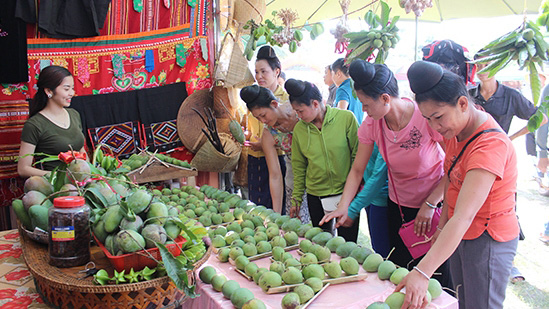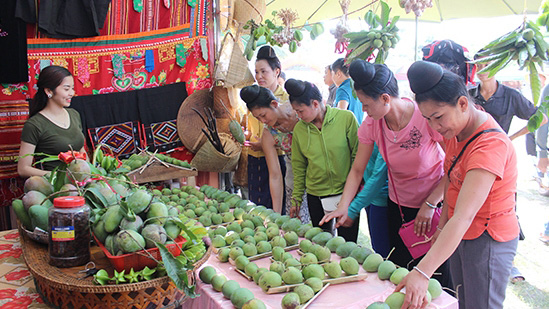


|
 Yen Chau mango festival kicks off
|
|
|
The two-day festival aims to introduce and promote the brand
name of Yen Chau mango; honour mango growers; create opportunities for mango
growers to exchange and improve their knowledge, experience planting, and
create valuable products from the mango.
Meanwhile, the festival is considered as an occasion to attract
investors, and create opportunities for cooperation between mango growers and
businesses in the province and other provinces.
The festival includes a series of activities, such as organising
30 booths to display mangoes, longans, and plums, agricultural products,
handicrafts of the district; a mango picking contest; a fishing contest at
Suoi Vat; folk games such as walking on stilts to pick mangoes or tugging.
Furthermore, the organising board has organised a number of
tours to visit the mango gardan at Vung Lung village, Chieng Hac commune, and
the famous cave in Yen Chau district.
On the occasion, Yen Chau disitrict also honoured ten
outstanding fruit tree production households in the district.
|
Source: NDO